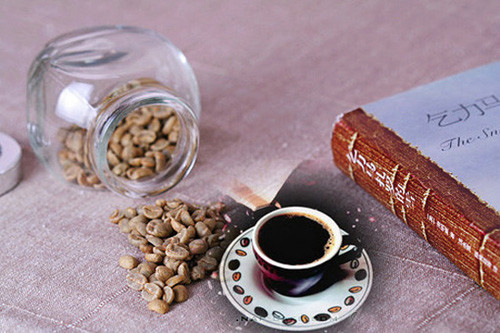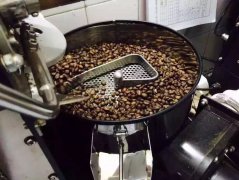On the water temperature of coffee extraction Robusta concentrated extraction water temperature

Just after two o'clock in the afternoon, the room crawled into the lazy sunshine like the setting sun. Hand punch a pot of Kenyan AA, with lips and teeth bursting "wine", tapping on the keyboard. Today, I'm here to talk to you about the water temperature when making coffee.
Whether hand-brewed, siphon, semi-automatic or fully automatic coffee machine, coffee extraction requires contact between water and coffee powder to form coffee liquid, and the various flavors of coffee, ingredients and rich soluble substances will be extracted into the final coffee liquid because of the contact with water. I often hear people ask why the coffee you drink is sometimes bitter and sometimes sour, and how to do it if you want a cup of coffee with a more sour taste.
In determining the taste and taste of a cup of coffee, the water temperature is not only very important but also has great variables. We can make different interpretations of the coffee we are about to get by adjusting the water temperature when brewing coffee. In other words, we need to adjust the water temperature accordingly when we hope that the coffee in our mouth will taste. Of course, the temperature of water is only one of the many factors that affect coffee extraction.
Low water temperature-> alcohol thickness, low taste, thin taste, low bitterness but high acidity
High water temperature-> mellow, thick taste, rich bitter taste, but lower acidity.
The two points listed above are only a relatively simple basic change criterion for the different effects of high and low water temperatures in coffee extraction. In fact, in order to express or get a cup of coffee, it is necessary to connect all the factors that can influence its taste, make some analysis and then adjust it, and roughly construct a model of the extraction scheme. if we extract according to this established model, we can effectively understand the flavor, taste and taste of coffee under different conditions. Of course, I would like to remind you that when adjusting various factors, we usually only need to adjust one or two items, for example, when we determine the amount of coffee powder, the degree of grinding, the ratio of powder to water and the extraction time, then what we have to adjust is the water temperature during extraction, of course, the baking degree of beans is usually unable to adjust.
It is generally recognized in the industry that the water temperature of coffee extraction is between 82Mui 96 degrees, the water temperature of hand drip filtration is basically 85Me 93 degrees, and the extraction water temperature of semi-automatic espresso machine is 92Mel 96 degrees.
As mentioned before, when adjusting the parameters of various factors, we cannot adjust all of them, nor can we consider only one. For example, when choosing the water temperature, we need to consider the freshness and grinding degree of coffee powder. If you get fresh beans that have been baked for three or four days, you can choose a lower water temperature when extracting, such as 85 to 88 degrees, because even after the fresh coffee beans are ground, there are still a lot of aroma and gases such as carbon dioxide unvolatilized. the lower water temperature can activate the coffee powder, release the aroma contained in the coffee powder, and dissolve the taste into the coffee liquid, and use the too high water temperature. On the contrary, the fresh coffee powder will be over-activated, releasing a large amount of aroma and gas, resulting in a complex taste and even scorched coffee powder, the loss outweighs the gain. On the other hand, if the coffee powder is not fresh enough, it is necessary to use a higher water temperature for brewing and extraction, and the high temperature is used to awaken the aroma and taste left in the sleeping coffee powder. This is why we can see the coffee powder expand rapidly and fully when we brew the fresh coffee powder.
Next time, I will share with you an example of extracting coffee at different water temperatures.
Important Notice :
前街咖啡 FrontStreet Coffee has moved to new addredd:
FrontStreet Coffee Address: 315,Donghua East Road,GuangZhou
Tel:020 38364473
- Prev

Robusta is one of the most important varieties of coffee in the world.
Robusta species (scientific name Coffee Robusta Linden) is one of the most important coffee tree varieties in the world. The leaf rust-resistant varieties found in Congo in Africa have stronger disease resistance than Arabica. In the general coffee market, many people like to compare robusta and Arabica coffee beans, which is incorrect. In fact, the Robusta species was originally from the Congo.
- Next

How to tell the robusta coffee beans? What does Luo Dou look like?
The first chapter of the Coffee Taste Collection, the basic knowledge of coffee beans, the first section, the three native species of coffee. 2. Robusta species (scientific name Coffee Robusta Linden). P8 (Note p8, which indicates page 8, is annotated in many places). Robusta coffee beans are generally used for instant solution because they extract twice as much coffee liquid as Arabica. Caffeine content 3
Related
- Beginners will see the "Coffee pull flower" guide!
- What is the difference between ice blog purified milk and ordinary milk coffee?
- Why is the Philippines the largest producer of crops in Liberia?
- For coffee extraction, should the fine powder be retained?
- How does extracted espresso fill pressed powder? How much strength does it take to press the powder?
- How to make jasmine cold extract coffee? Is the jasmine + latte good?
- Will this little toy really make the coffee taste better? How does Lily Drip affect coffee extraction?
- Will the action of slapping the filter cup also affect coffee extraction?
- What's the difference between powder-to-water ratio and powder-to-liquid ratio?
- What is the Ethiopian local species? What does it have to do with Heirloom native species?

